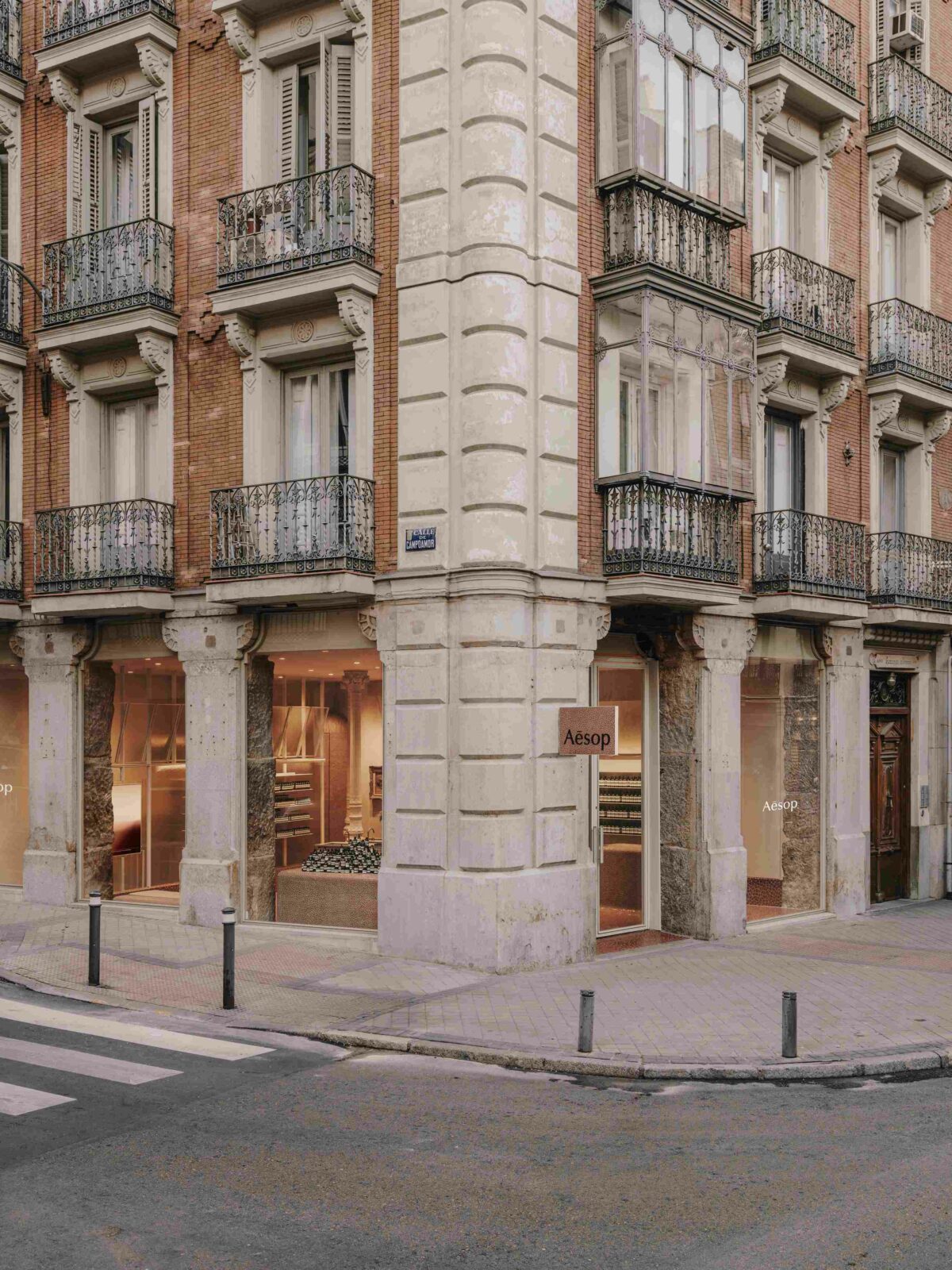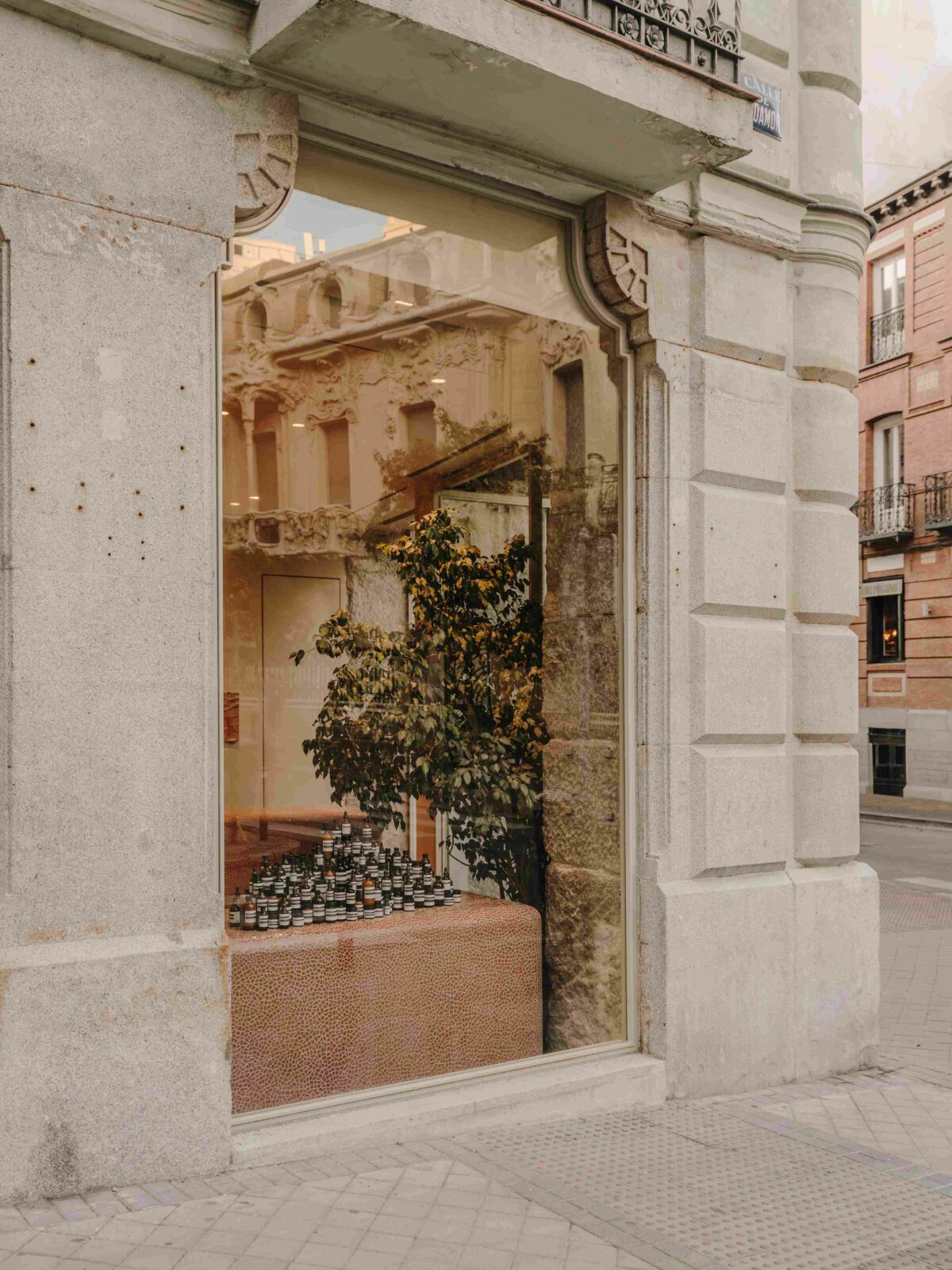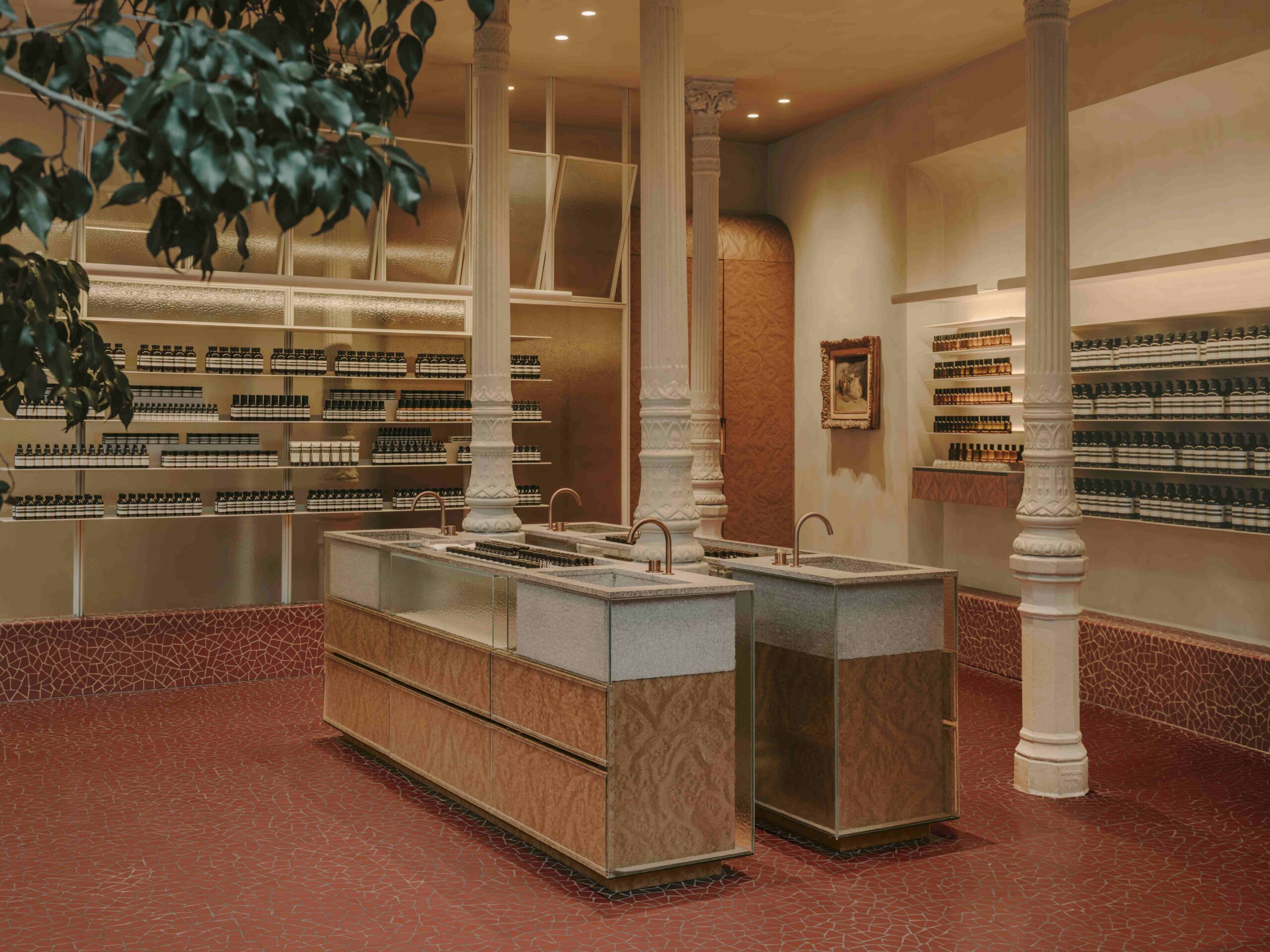Header: Salva López
Aesop Las Salesas, designed by Ciszak Dalmas and Matteo Ferrari, is located in Madrid’s Las Salesas district, a short distance from the Palacio Longoria. This is the second Aesop store in the city by the same team, who decided to continue using local materials and architectural traditions to present the brand to its public better.
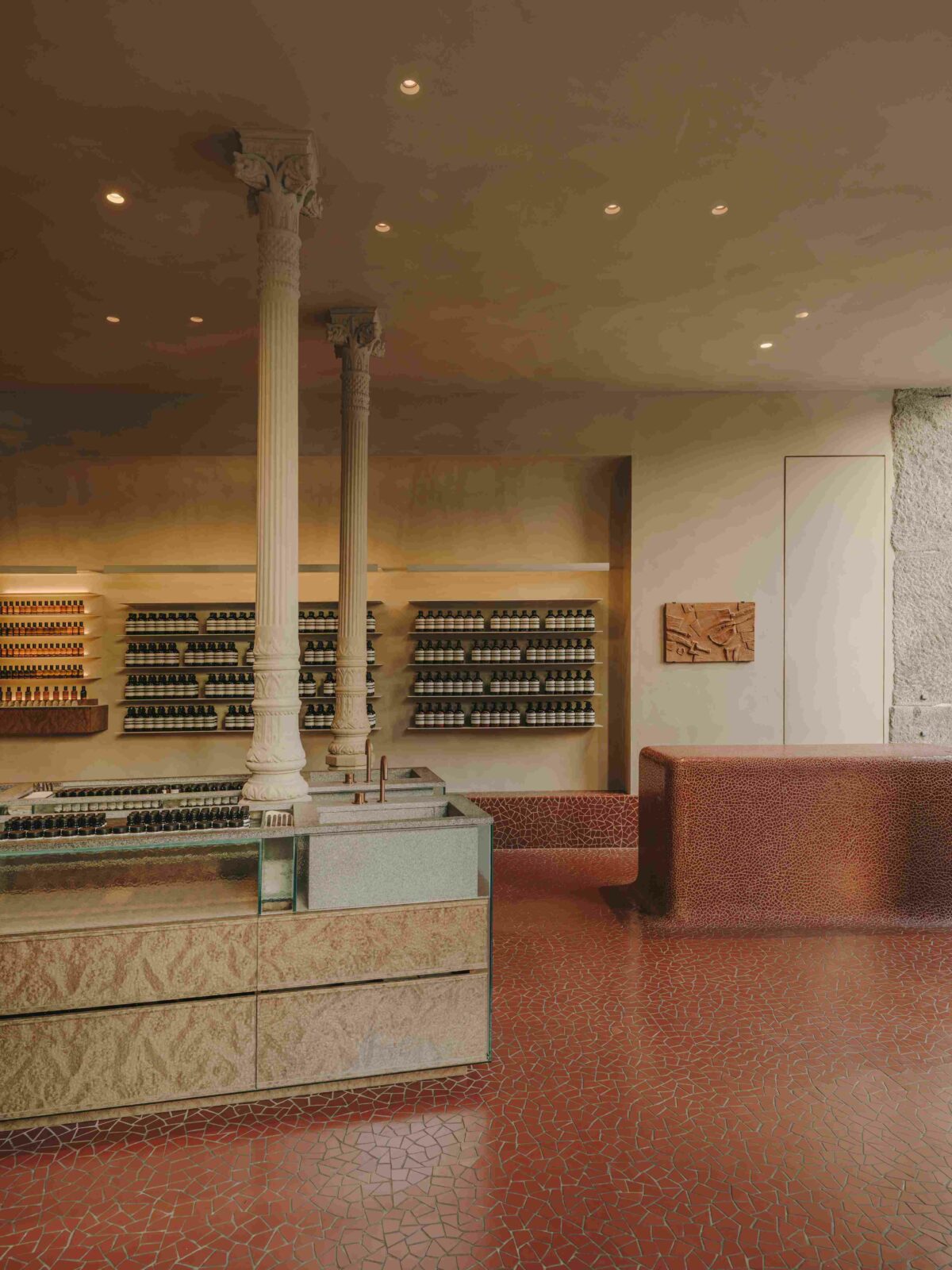
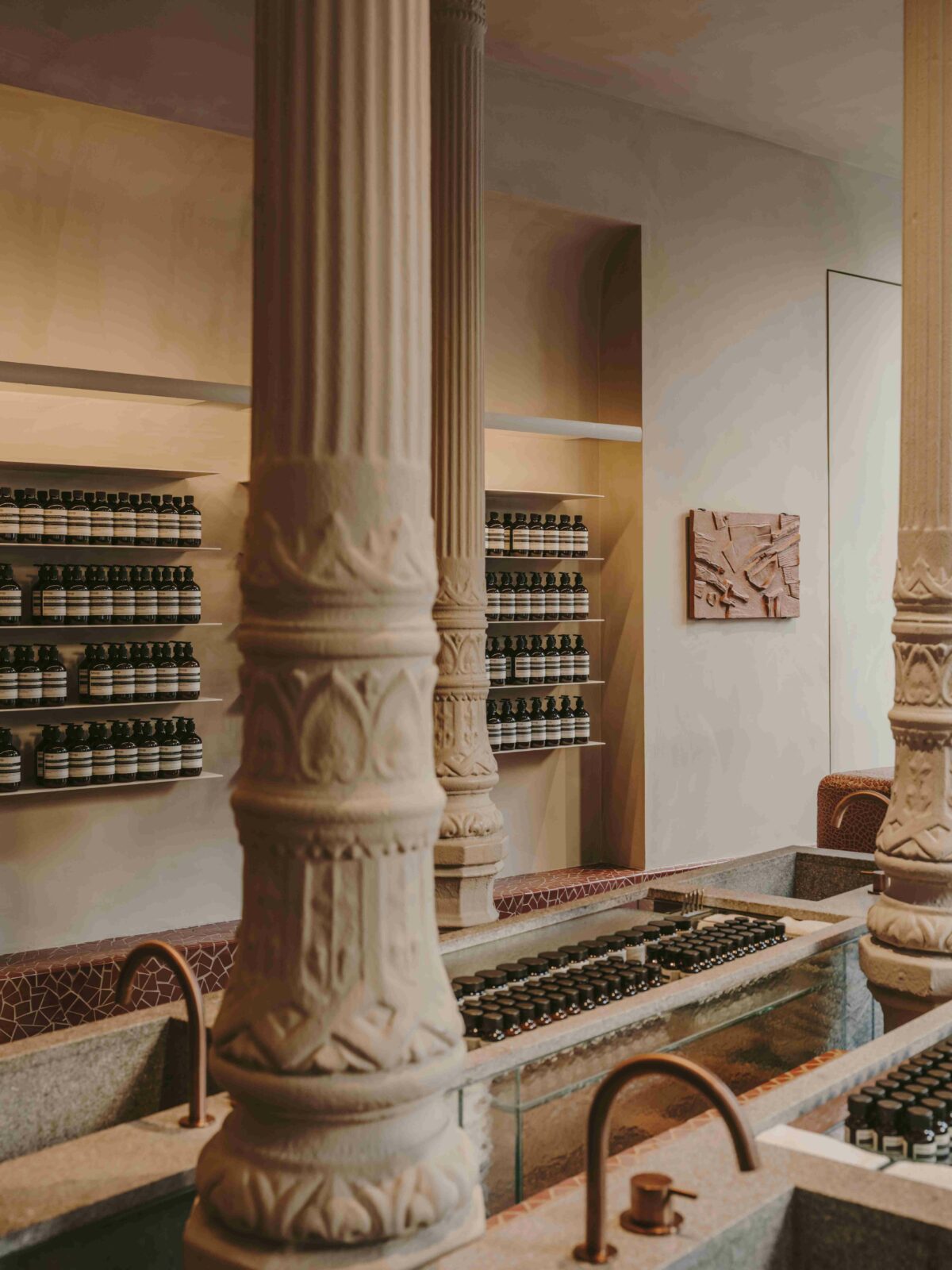
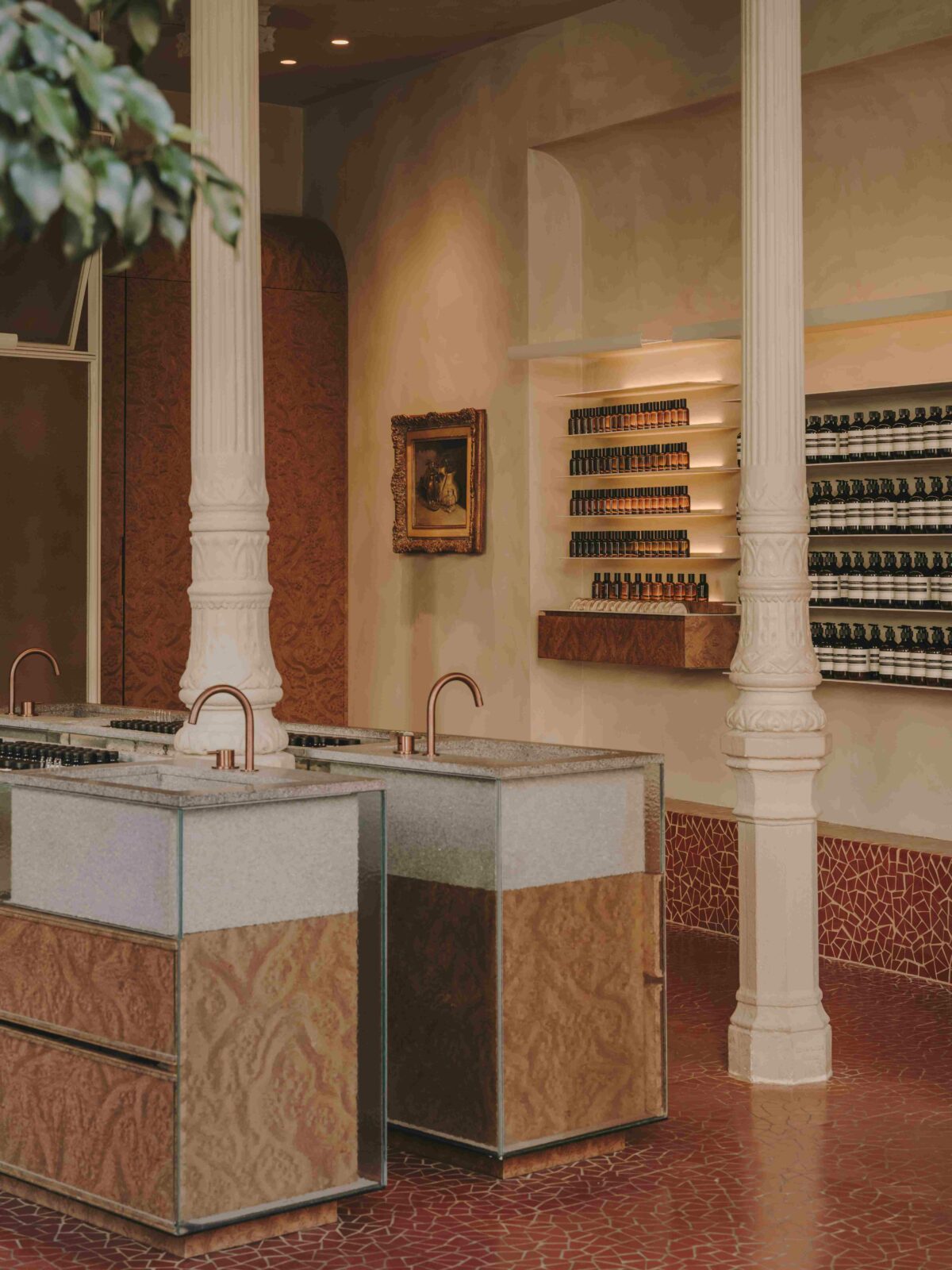
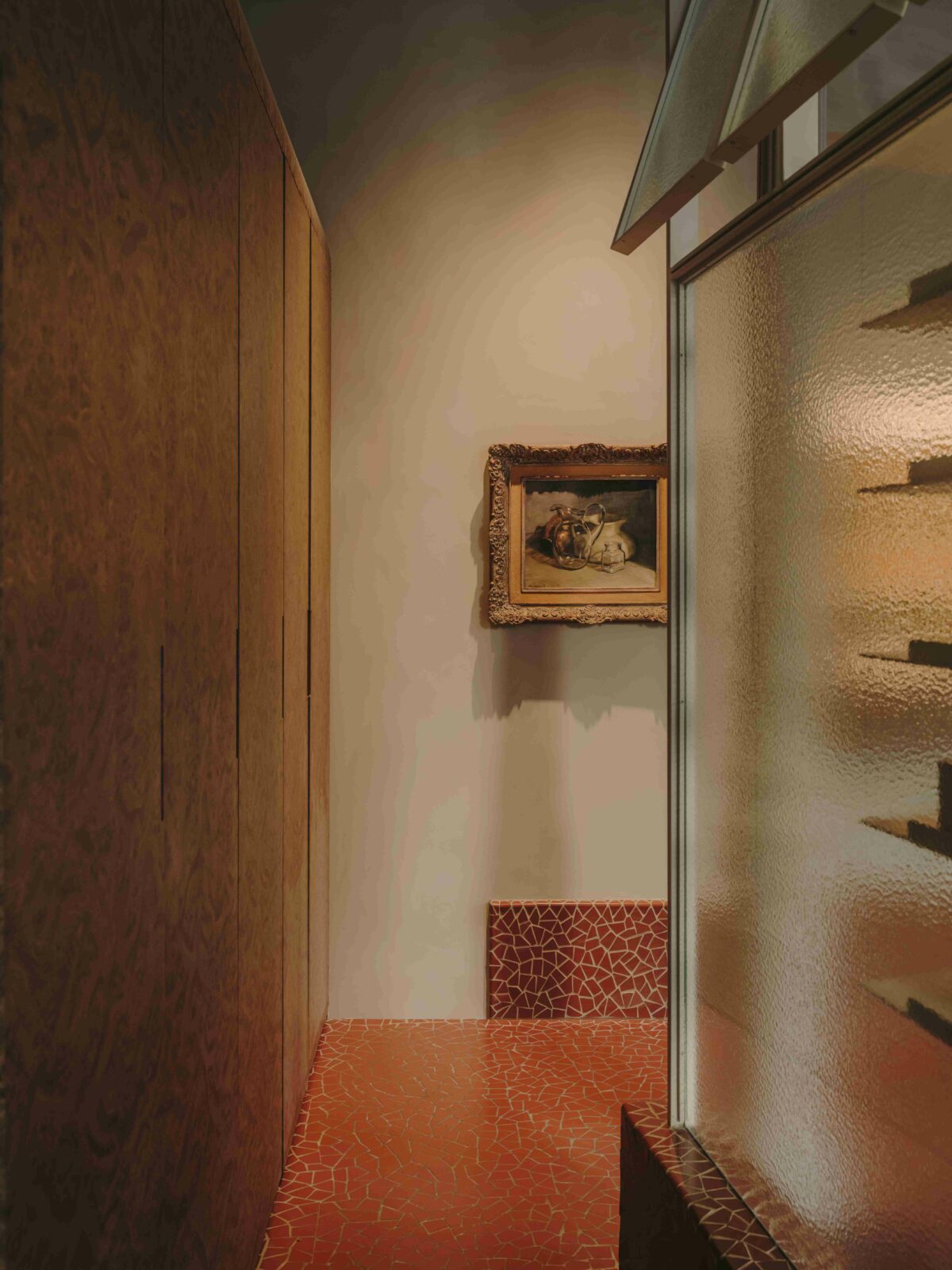
The design was clearly inspired by Spanish Modernism, which can be seen in the use of trencadís, a traditional mosaic technique made from broken ceramic fragments. Here, the material is reinterpreted in a more sculptural form, shaping large architectural surfaces that define the space without the need for extra decorations. Rather than functioning as cladding, the trencadís become an intrinsic part of the store’s identity.
The combination of materials makes this design even more noteworthy, as each choice contributes to the atmosphere in a distinct way. Cathedral glass plays with daylight, creating soft glows and hues throughout the interior while limiting dependence on artificial lighting. Local Silvestre Granito and Alpi Walnut Burl add warmth and make surfaces interesting, matching the space with Madrid’s aesthetic without directly copying historical forms.
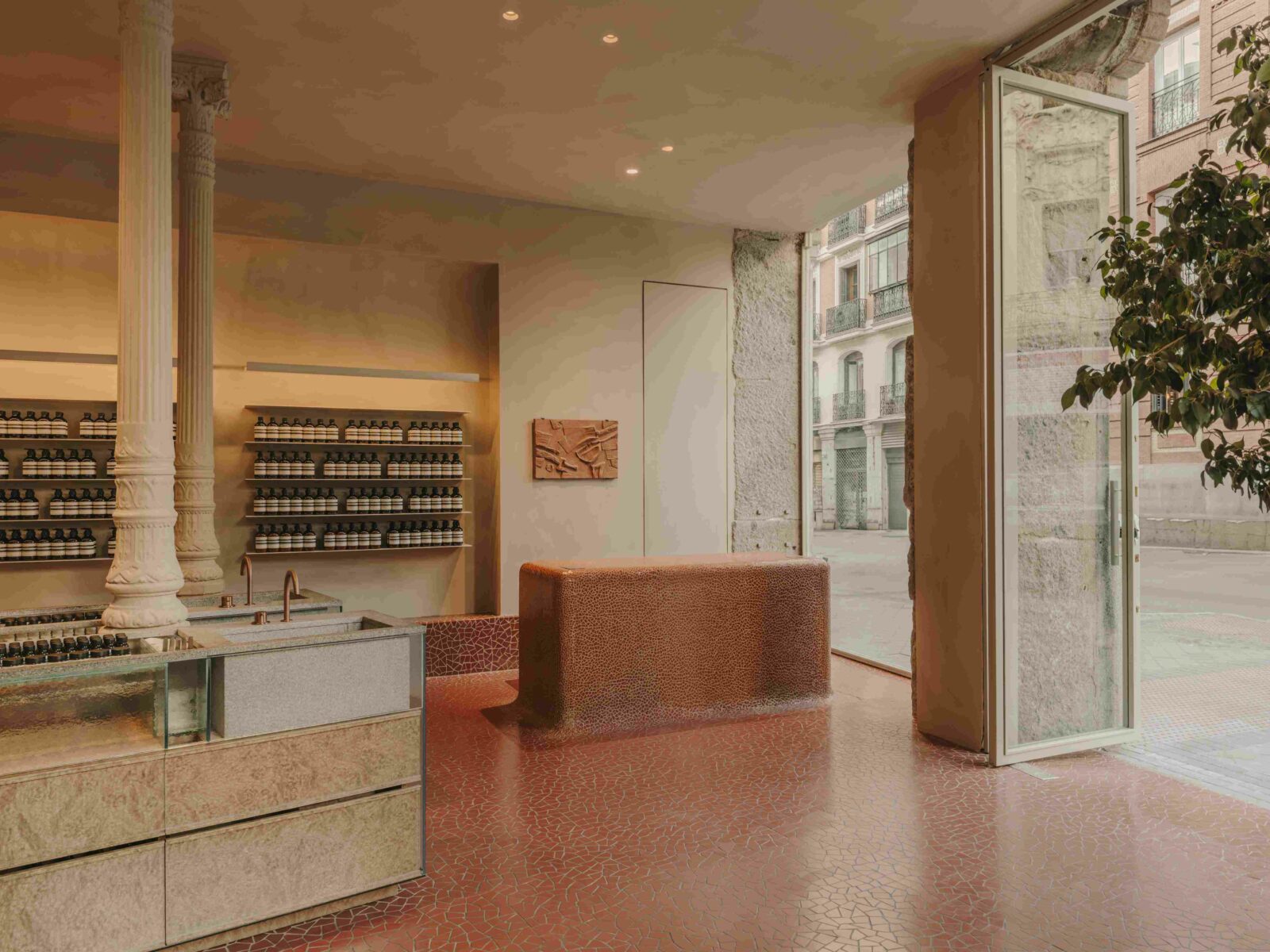
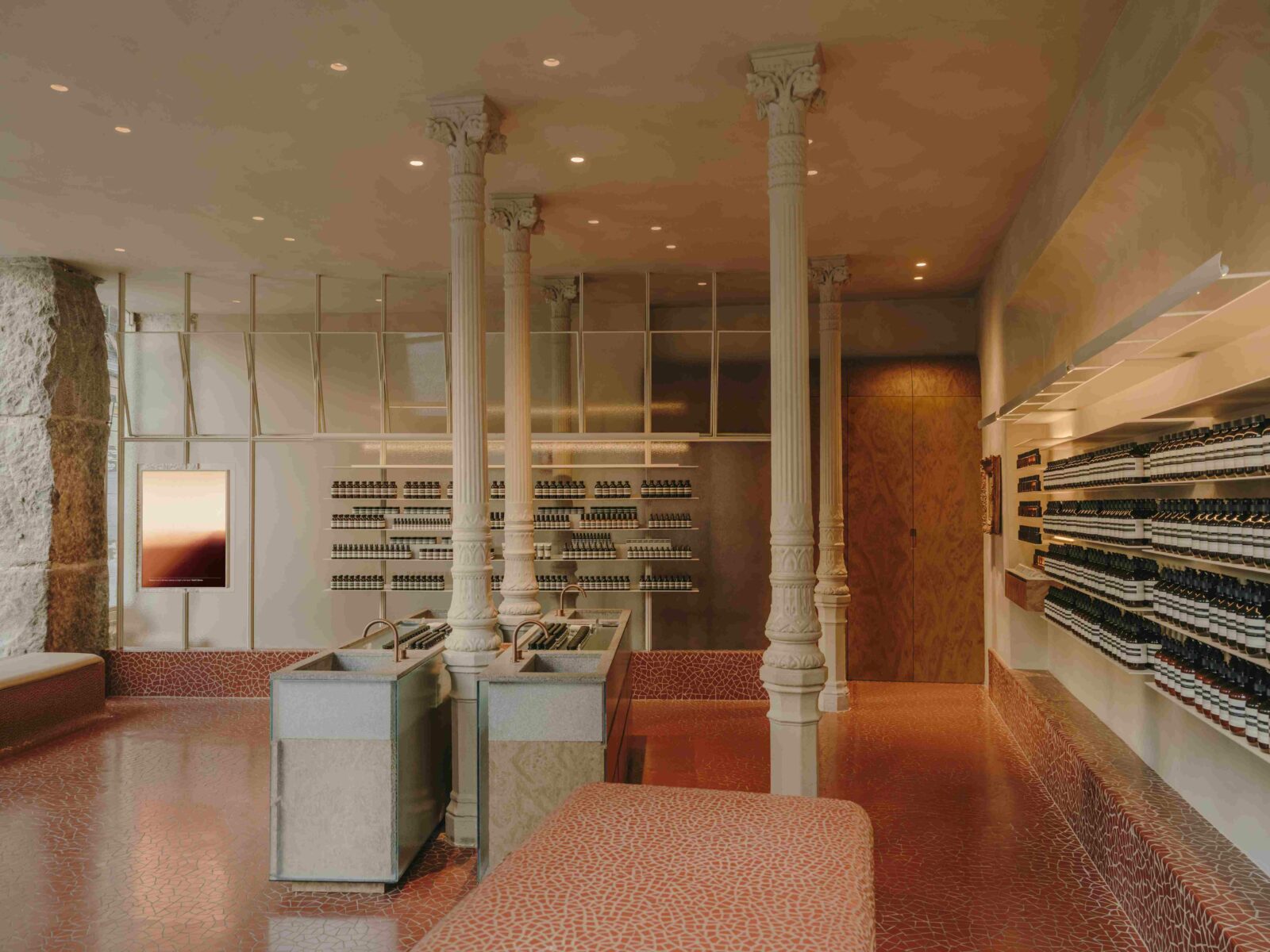
The store’s layout revolves around a central floating portico, which separates functional and customer-facing areas without creating barriers. This allows visitors to intuitively navigate between product displays, consultation zones, and service points. The portico also provides some visibility into the operational side of the store, giving visitors the chance to feel connected with the brand due to the transparency of the retail experience.
Movement through the space is unobstructed, and built-in seating and low-profile fixtures are added to accommodate informal moments of pause. These areas fit into the overall layout without looking standoffish, encouraging a longer engagement with the products on display.
